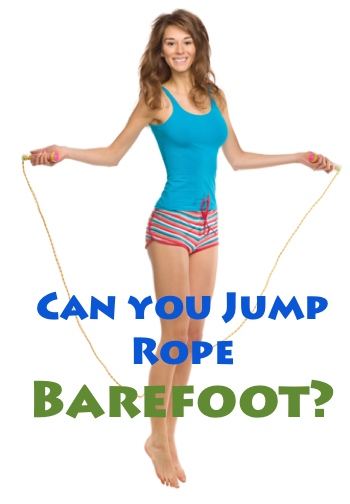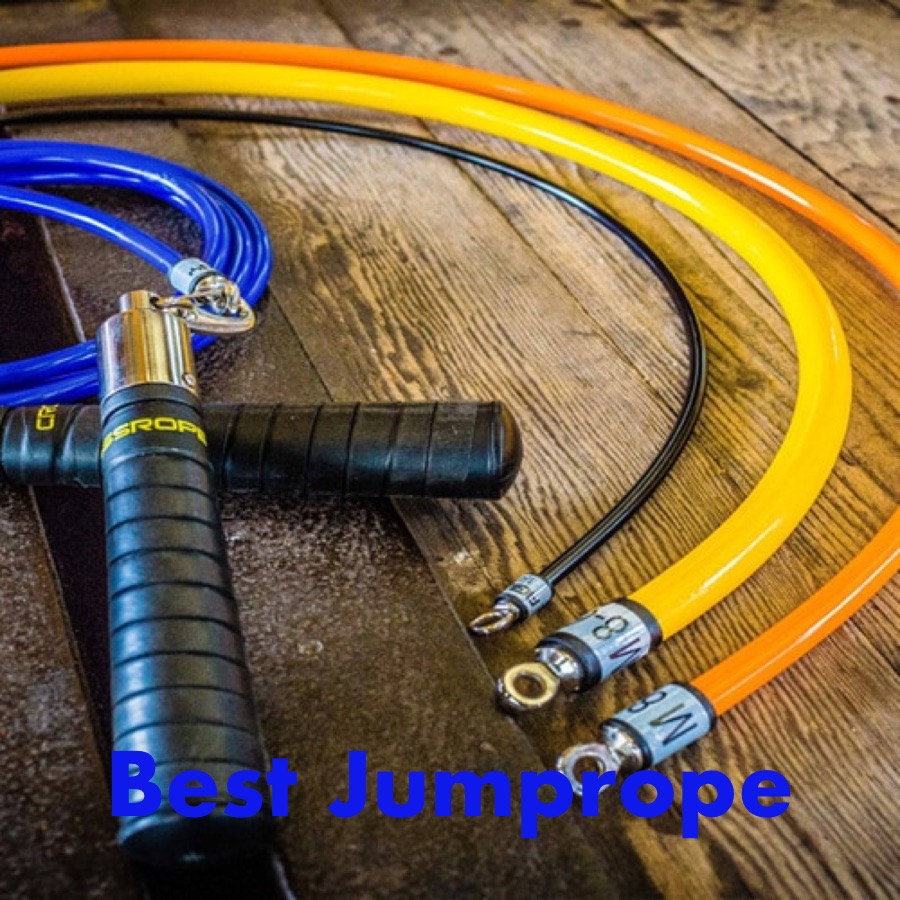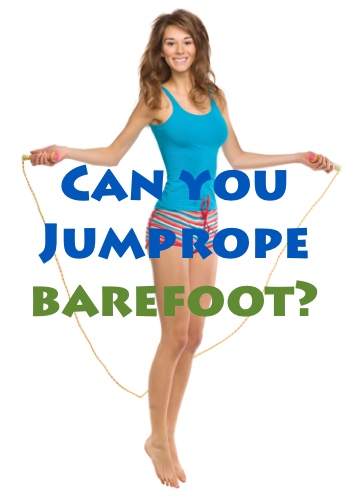
Can You Jump Rope Barefoot?
Table of Contents
Jumping rope or skipping as it is called in some parts of the world is an excellent form of exercise. I especially like it as my go-to exercise when I am on the move and can’t readily get to the gym. Even better when I’m in a new city or location. Jump ropes are super lightweight and portable perfect to stuff in your backpack or keep in your gym bag.
Can you jump rope barefoot? Yes, you can jump rope barefoot. Bear in mind though that it’s an advanced movement, so no fancy footwork to begin with. Keep it simple. Choose a low impact surface like a gym floor or jump mat. Avoid jumping on concrete barefoot as it can be painful.
I will walk you through everything you need to know to jump rope barefoot successfully. We will look at the types of ropes to use, the recommended jump rope movement types and the best surfaces you can jump rope on.
The Jump Rope Movement
First, lets quickly go through the basic set up for the jumping rope.
The simple steps to jump rope can be boiled down to some simple steps:
- Make sure your feet are close together as you jump (it helps to avoid the rope getting caught)
- Land on the balls and toes of your feet
- Land softly with soft knees
- Jump just enough to get the rope under your feet (no need for huge jumps)
- Remain upright with the eye looking at the horizon
- Keep soft knees throughout the jumping movement
- keep your shoulders down and relaxed ( Avoid the clothes hanger look)
- Make sure your elbows are tucked in as much as possible
- Keep your hands close to your waistline or pockets (as I like to say)
- Make sure that all rotation of the rope comes from the wrists primarily.
How to Jump Rope Barefoot
Keep everything as simple as possible.
The main thing you need to bear in mind when you are jumping rope barefoot is to keep the simplicity of the jump (no fancy footwork stuff). Remember you are barefoot and it does get painful when the rope catches your feet.
Simple small jumps at a steady pace will get your off to a great start. Do this in a relaxed and easy flowing movement. As you get more confident you can run in place or do knee raises.
I don’t recommend jumping on concrete unless you absolutely have to and are a seasoned jumper. The lack of flex of the surface will do you no favours and is a recipe for shin splints. Instead jump on a high impact mat, gym floor or wooden deck to reduce the impact and make things a lot easier on your feet.
Keep a close eye on the duration of your jumping in the beginning until you are comfortable with longer periods. 5-10 mins for a beginner is fine.
For the more advance jump ropers then you can you more than 10 mins is you choose.
Avoid doing double-unders barefoot as you have to jump twice as high, loading your shins and feet a lot more. You are also as a great chance of getting caught by the rope and the hurts if you are barefoot.
The Best Surfaces To Jump Rope On
- A Jump Rope Mat – or a high impact mat of any kind would be enough to lessen the impact on your body as a whole. It will also have less impact on your shins and feet too.
- The Gym Floor – is another good place to jump rope. Most gyms have space for you to jump rope in so you can find a corner where to get a quick jump rope session in.
- Soft wet sand – if you happen to be on the beach then that also a surface to jump rope on.
- Short cut Grass – is another good surface. Make sure the grass isn’t too long as you will end up being a human lawnmower. That’s not what we want.
Surfaces To Avoid
- Concrete surfaces – are high impact and not recommended. Depending on the rope you have the concrete will wear through them pretty quickly and the rope will snap.
- Pavement and tarred road- are also not ideal for jumping rope.
Benefits of Jumping Rope
- Low cost to begin – You can pick up a jump rope almost anywhere in the beginning for less than $10. Most sports good store will have something to get you started. You can get more advanced and fancy jump ropes later if you choose.
- Small and Portable – As I said in the beginning what I like about jump ropes is that they are lightweight and can fit in my backpack or gym bag when I’m on the move. Everyone should have a jump rope in their gym bag.
- Excellent for Cardio Workout – One 10 mins session has the same benefit as running for about 8 miles and will a lot less impact on your body. Perfect for the winter months when you are less inclined to go for a run, or you want to mix it up from the treadmill work. See my article on running barefoot on the treadmill here.
- Simple to learn – The movement is really simple to learn a once you practice regularly and consistently wherever you are it is a lot of fun.
- Improves Balance, and hand-foot coordination – As soon as you have the basic moves dialled in your overall balance will improve. Adding in different footwork patterns, rope types and speed will add to it even more.
- Less knee Damage – Unlike running where there are a lot more variables that could cause injury. Jumping for 10 mins is less likely to cause you the same level of injury as going for a 10-mile run. Landing in the ball of the feet with soft knees is an excellent way to avoid this.
Jump Rope Features to look for
Jump Ropes come in a variety of functions, shapes, sizes and cost. Here are some pointers to bear in mind to help you choose the rope that works for you.
- Construction Material – Jump Ropes come in different weights and texture. They can be plastic, rubber coated, wire. Cable and even leather ropes. All with varying turnover speed.
- Rope Weight – Depending on what you are trying to achieve, how heavy the rope is is very important. As a quick rule of thumb, the lighter ropes are for speed work with a lot a Cardio bias. And the heavier ropes are for strength and endurance work.
- Rope Length – The rope you get is a function of how tall you are. If your rope is to short it will keep catching on your feet as you jump rope. If it is too long, then you will have considerably less control over what you are doing. Most ropes can be adjusted to suit your height when you choose your rope.
- Handle Type – Some handle are weighted which isn’t my preferences I would rather have a weighted rope instead. Some are longer for greater turnover speed, and some are thicker for increased grip and control.
Consider Wearing Shoes too
Jumping rope with barefoot/ minimalist shoes is also an option that should not be discounted. Sometimes it just a lot simpler to jump in your Barefoot shoes especially if you are jumping rope as part of a combination of exercises. You will still get the same benefits either way.
Wrap
Jumping Rope as a whole is a very beneficial exercise that is often overlooked. Barefoot or not it should be part of your regular training routine. I love the fact that you can take your Jump rope with you wherever you go. Being able to get a good Cardio work out in about 10 mins is a definite plus too.
You can, of course, get a wide variety of ropes to meet your training needs for the moment you are in. Over the years I have used many different types of rope currently Iike the crossropes. See my article on best jump ropes here.

